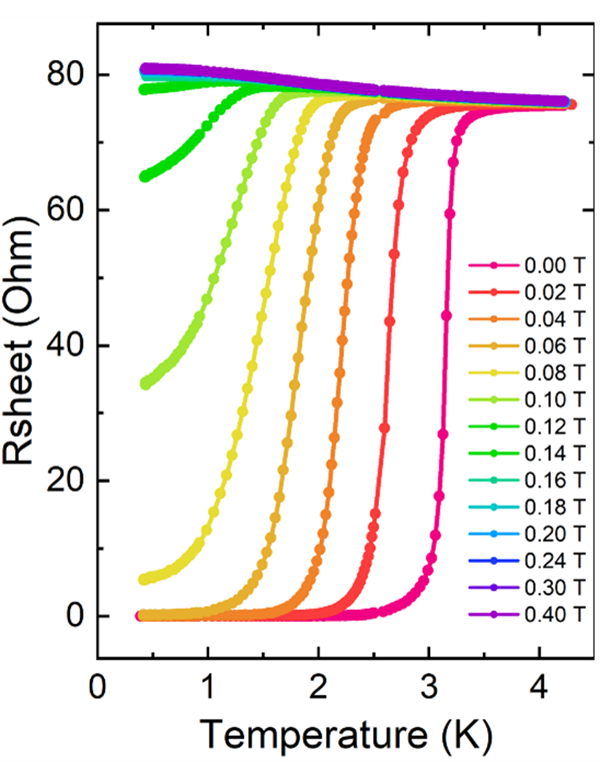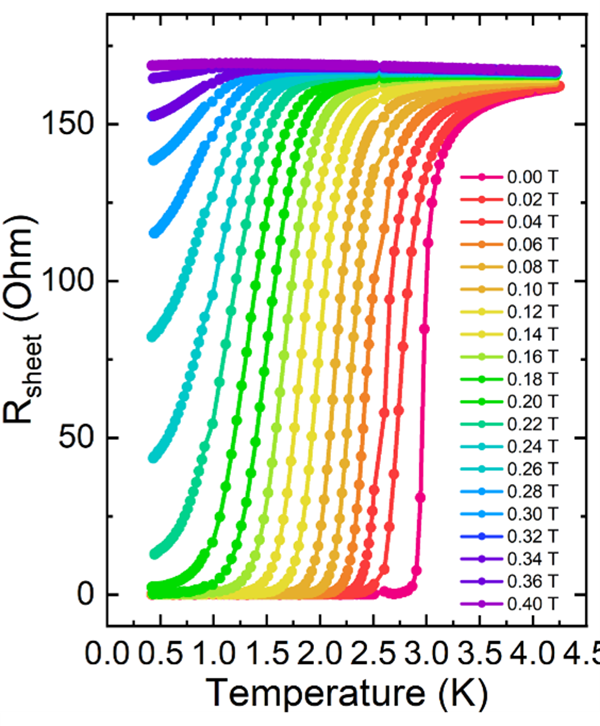MANA International Symposium 2025
Quantum Materials - 06
Abstract
Atomically thin superconductors have attracted a lot of attention over the last decade for their exotic properties, such as tunable interfaces, novel quantum phases, and possibilities for future applications. On these materials, Josephson vortices are formed at atomic steps under the application of magnetic field.
The target atomically thin superconductor, Si(111)-(√7×√3)-In, was carefully fabricated on the a silicon substrate with intended atomic steps, then bias currents were applied in the parallel and perpendicular directions with respect to atomic steps. Under controlled magnetic fields, the studied material showed anisotropic behaviors when cooled to 0.4 K. Data analysis based on the thermally activated flux flow model was conducted
As an undergoing research, silicon substrates with different miscut angles are also applied to control the trapping energy of Josephson vortex. The result suggests the importance of the size of vortex relative to the step distance.


Reference
- Y. Sato et al., Phys. Rev Lett 130, 106002 (2023).
- S. Yoshizawa et al., Phys. Rev Lett 113, 247004 (2014).
- Y. Saito et al., Science 350, 6259 (2015).

